SAAB 340
Background
The SF-340 was a cooperative venture between Saab-Scania and Fairchild Industries announced in January 1980. Fairchild was responsible for the design and manufacture of the wings, tail surfaces and the engine housings. Saab were responsible for the fuselage and remaining systems. The engines chosen were the General Electric CT-7 driving Dowty propellers. Saab (which provided 75% of the development costs) was also responsible for the systems integration, and flight testing. The first of two prototypes, SE-ISF, was first flown on January 25, 1983. The other was SE-ISA. The first production aircraft, SE-ISB, was flown on August 25, 1983. Certification was completed on June 29, 1984, and the first commercial operator was Crossair of Switzerland.
The aircraft was initially offered in two versions - an air transport configuration (up to 35 seats) and an executive version. Problems with inflight engine shutdowns saw the aircraft grounded, but the problem was soon rectified. In 1985 an uprated version with increased MTOW was offered, and provision made for existing aircraft to be modified. Fairchild withdrew from the project in October 1985, and the project became wholly Saabs. In 1987 a quick change freighter version (S340QC) and the S340B were introduced. The S340B again features an uprated powerplant with increased MTOW, and enlarged tail surfaces. An AEW version has also been developed for the Swedish military. Further developments include larger wings, and a 50 seat follow on version, the Saab 2000 which first flew in 1992.
The sole operater of the SF-340A in New Zealand has been Air Nelson since 1990. The company was formed as Air Motueka by Robert Inglis and Vicky Smith in 1984 using a Piper Aztec and then a Navajo across Cooks Strait. The name changed the following year. Government deregulation in 1985 meant new opportunities in the regional market. Steady growth followed by a 50% buy in by Air New Zealand in 1988 provided new opportunities. More capacity in the form of Metros was introduced in 1988. Then following Air New Zealand's withdrawal of the F-27 from domestic routes, the Saab 340 was introduced in 1990. The 34 seat configuration was found to be useful on many of the former Friendship routes. Initially operated in Crossair colours (as worn by the first arrivals) with Air Nelson titles, the aircraft (along with Hamilton based Air New Zealand subsidiary, Eagle Air) have featured the Air New Zealand Link livery since 1991. To accomodate the Saabs, Air Nelson has developed its own maintenance base at Nelson.
To date 18 of the type have been operated on leases of varying length. The current fleet (as at November 1, 1999) includes:
- ZK-FXA (c/n 120 ex SE-F20, HB-AHP) Formerly operated by Crossair in Switzerland. Arrived in Nelson on October 23, 1990. Registered in NZ October 26, 1990. Started on scheduled services on November 13, 1990.
- ZK-FXB (c/n 122 ex SE-F22, HB-AHQ) Formerly operated by Crossair in Switzerland. Arrived in Nelson on September 27, 1990. Registered in NZ October 15, 1990. Started on scheduled services on November 12, 1990.
- ZK-FXD (c/n 088 ex SE-E88, HB-AHN) First flown on March 18, 1987. Formerly operated by Crossair in Switzerland. Arrived in Nelson on December 4, 1990 and was registered 2 days later. Made two promotional flights from New Plymouth on December 9, and started scheduled services on December 10, 1990.
- ZK-NLE (c/n 067 ex SE-E67, SE-ISX, ZK-FXC) First flown on August 22, 1986. Formerly with Swedair. Arrived in Nelson on July 19, 1993, and was flown to Christchurch the following day for painting. Registered July 27, 1993 (FXC not taken up). The aircraft was test flown on August 7, and started scheduled services on August 11, 1993.
- ZK-NLH (c/n 137 ex SE-F37, SE-ISN) First flown November 18, 1988. Formerly with Swedair. Arrived in Nelson on June 27, 1994. Registered July 7, 1994. Started scheduled services on August 25, 1994.
- ZK-NLN (c/n 136 ex SE-F36, F-GHMJ, N136AN) First flown November 19, 1988. Formerly with Brittany Air International (Brit'Air). Arrived in Nelson on February 5, 1997. Registered February 17, 1997. After painting at Gisborne, it was test flown on March 8 and started scheduled services on March 9, 1997.
- ZK-NLO (c/n 153 ex SE-F53, F-GHMI, N153AN) First flown May 31, 1989. Formerly with Brittany Air International (Brit'Air). Arrived in Nelson on April 23, 1997, and was flown to Gisborne for painting the same day. Registered April 28, 1997. Positioned to Nelson on May 4, and started scheduled services on May 23, 1997.
- ZK-NLP (c/n 042 ex SE-E42, SE-ISU) First flown November 17, 1985. Formerly with Swedair. Arrived in Nelson on August 9, 1994. Registered August 12, 1994. After painting at Gisborne, it started scheduled services on September 30, 1994.
- ZK-NLQ (c/n 124 ex SE-F24, D-CDID) First flown June 6, 1988. Formerly with Delta Air GmbH, Deutsche BA. Arrived in Nelson on November 22, 1996. Registered November 27, 1996. After painting at Gisborne, it was positioned to Nelson on December 1, and started scheduled services on December 5, 1996.
- ZK-NLR (c/n 097 ex SE-E97, SE-ISZ) First flown June 14, 1987. Formerly with Swedair. Arrived in Nelson on July 16, 1994. Registered July 25, 1994. After painting at Gisborne, it started scheduled services on September 9, 1994.
- ZK-NLS (c/n 134 ex SE-E34, HB-AHT) First flown October 26, 1988. Formerly with Crossair. Arrived in Nelson on February 23, 1996. Registered February 27, 1996. After painting at Gisborne, it started scheduled services on March 10, 1996.
- ZK-NLT (c/n 116 ex SE-F16, HB-AHP, D-CDIC) First flown June 6, 1988. Formerly with Crossair, Delta Air GmbH, and Deutsche BA. Arrived in Nelson on November 5, 1996, and was flown to Gisborne for painting the same day. Registered November 7, 1996. Positioned to Nelson on November 13, and started scheduled services on November 16, 1996.
- ZK-NSK (c/n 084 ex SE-E84, HB-AHM) First flown February 14, 1987. Formerly with Crossair. Arrived in Nelson on March 13, 1992. Registered March 16, 1992. Started scheduled services on March 19 27, 1992. Initially operated in Crossair colours with Air New Zealand Link titles, until the aircraft was repainted on May 12, 1992.
Previously utilised SF-340A aircraft include:
- ZK-FXC (c/n 069 ex SE-E69, N304CL, N69LP, VH-OLH) First flown on September 10, 1986. Registration N304CL not used. The aircraft's prior service included leases to Swedair, LAPA in Argentina, and Hazelton Airlines in Australia. The aircraft was in New Zealand on a six month lease to Air Nelson, arriving in Nelson from Australia on October 24 and going on the NZ register on November 2, 1990. Started scheduled services on December 9, 1990, and finished on May 10, 1991 (having completed 783 hours/ 1282 cycles). The aircraft departed from Auckland on May 16, 1991 to Argentina. It was withdrawn from the NZ register on May 22, 1991, when it returned to the US register.
- ZK-FXQ (c/n 145 ex SE-F45, SE-ISD) Formerly with Swedair. Arrived in Auckland on May 27, 1993, and delivered to Nelson the next day. Registered May 31, 1993. Made a training flight on May 31, and started scheduled services the same day. Initially operated in Swedair colours with Air New Zealand Link titles. Finished services on December 5, 1996 (having completed 7,295 hours/ 9,423 cycles). The registration was cancelled on January 3, 1997. The aircraft departed from Nelson on January 10, 1997, as SE-ISD to return to Sweden.
- ZK-NLF (c/n 156 ex SE-F56, SE-ISE) First flown on June 28, 1989. Formerly with Swedair. Arrived in Nelson on March 13, 1994. Registered March 16, 1994. Started services on ?, 1994. Finished services on March 7, 1997 (having completed 6,016 hours/ 7,658 cycles). The registration was cancelled on April 8, 1997. The aircraft departed from Nelson on April 18, 1997, as SE-ISE to return to Sweden.
- ZK-NSL (c/n 141 ex SE-F41, D-CHBA, SE-KRS) A1989 model. Formerly with Air Bremen. Arrived at Nelson on April 18, 1991. Registered on April 23, 1991. Started scheduled services on April 27, 1991. The aircraft operated in Air Bremen colours with Air Nelson lettering, until repainted in the Air New Zealand Link scheme (May 26, 1991). The registration was cancelled on January 21, 1998. The aircraft departed from Nelson on December 30, 1997, having been sold in the Czech Republic (and later registered OK-UFO).
- ZK-NSM (c/n 144 ex SE-F44, D-CHBB, SE-KRT) First flown on February 17, 1989. Formerly with Air Bremen. Arrived at Nelson on April 30, 1991, and was promptly despatched to Christchurch for repainting - it was the first SF-340 to appear in Air New Zealand Link colours. Started scheduled services on May 16, 1991. The aircraft was used as a demonstrator by Saab in August/September 1993 in a number of South Pacific locations (although crewed by Air Nelson). Finished services on November 30, 1996 (having completed 11,318 hours/ 15,001 cycles). The registration was cancelled on January 24, 1997, the aircraft had departed from Auckland on December 8, 1996, as LV-PMG on a ferry flight to Nashville, TN. The aircraft subsequently was registered as LV-WTF.
Last Update:- 12 November, 1999
Technical Data
Data is for the Saab 340B
- Accommodation2+1+34
- Dimensions
- Span, 21.44m (70'4ft)
- Length, 19.73m (64'8ft)
- Height,6.87m (22'7ft)
- Weight
- empty,8,035kg (17,715lb)
- max,13,063kg (28,800lb)
- Power Plant2 x 1,870shp GE CT7-9B turboprops
- Performance
- max speed,522km/h (325mph)
- max climb,ft/min (m/min)
- ceiling,25,000ft (7,620m)
- range,1,807km (1,123miles)
Images
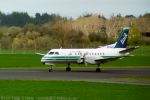

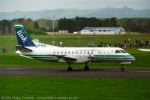
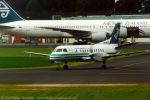
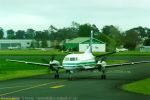
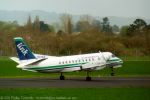
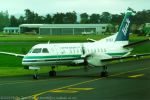
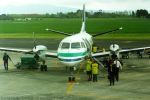

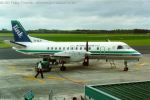

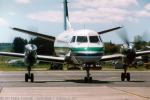
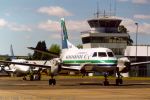
 © 1999 Phillip Treweek, all rights reserved
© 1999 Phillip Treweek, all rights reserved